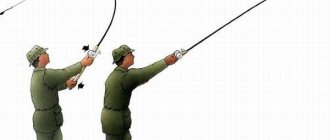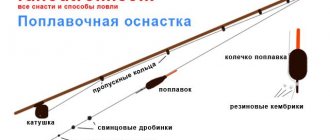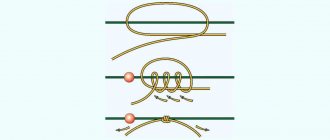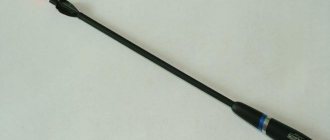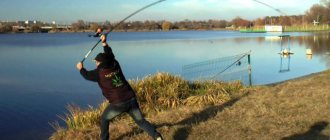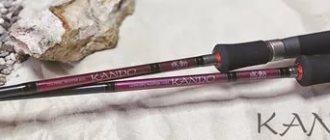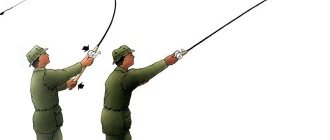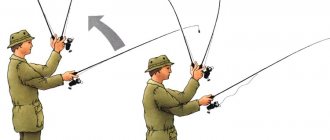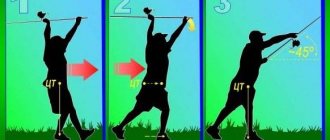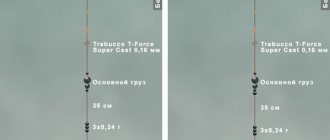When to use a fishing rod for long casting
To reach the place where the fish is standing, sometimes you have to cast the tackle quite far. There are a number of cases where using long-casting rods is the best option.
If the fish turns out to be so tender and cautious that only a float can fix it, you should resort to the presented type of tackle. Also, the float rig of a long-casting fishing rod will allow you to fish in windows of river vegetation.
For fishing that requires the catcher to move along the shore (for example, for burrowing carp along bubbles), only a long-casting rod with a float is suitable. In this case, you can walk along the shore with loaded gear. As soon as the fish shows itself (blowing out a garland of bubbles), a long-casting fishing rod with a float is thrown into this area. Within 5 minutes the fish bites the bait. If not, you can move on.
There is also a certain type of fishermen who are simply not comfortable fishing with other types of long-casting rods other than those with a float attachment. If fishing turns out to be the most successful and comfortable using exclusively such equipment, then there is no point in using other methods. After all, the whole process should be enjoyable. There is no need for discomfort here.
You should use a fishing rod for long-distance casting when the water is still or has a slight current. In other cases, it is still more correct to use a feeder.
Features of spinning rods for long casting
Such forms are not suitable for spinning from the shoreline; with their help it is impossible to cast the bait to the required distance. The long casting method is mainly used for fishing:
- asp, since this fish is particularly careful and feeds far from the shore;
- salmon in rivers, where you also need to cast spoons over long distances;
- jigging on medium and large rivers to catch larger specimens of predatory fish species.
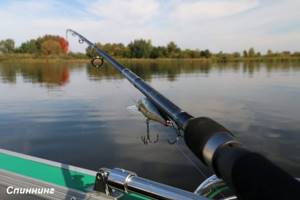
Using a long-cast spinning rod you can successfully catch:
- various irregularities in the riverbed, including edges in the middle of the river;
- riffles at great depths;
- This method also works well for holes and elongated ditches in large bodies of water;
- distant snags and flooded trees become a haven for many fish; only long casting will help in catching them.
To fully explore all these places and fish for a great trophy, you should know the features of spinning rods for long-distance casting. The most important indicator should be the length, because as mentioned above, a small form will not be able to make a decent throw of the cord or fishing line to the required distance. These rods are good for fishing from a boat or from the shore in small bodies of water.
A tall blank can cast 100 meters or more with a minimum of effort by the angler; this is facilitated by the characteristics originally built into it.
The second thing to pay attention to is the system; not everyone is suitable for working at long distances. After all, in addition to casting, the rod must show a good bite so that the fisherman can hook the trophy in time.
Along with this, other spinning rod components for long-distance casting are also important; now we will look at them in more detail.
Types of fishing rods for long casting
There are two types of long casting rods. This is a tackle with sliding and blind types of floats. The use of each variety depends on the fishing conditions. To make a float rod for long-distance casting, you need to assess the strength of the current and the depth of the reservoir.
The presented tackle can be used both for close-range fishing and at ultra-long distances, which can reach 100 m or even more. The depth at such distances can be quite large.
Long-distance casting using a fishing rod equipped with a floating float can be carried out to any depth. For such an instrument there are no restrictions in this indicator. However, when making ultra-long casts, you should take into account the strength of the wind and current. There are ways to overcome adverse weather conditions. However, in some cases, blind tackle is used. It can be freely used in medium flows. But there are conditions in which it is still not suitable. The sliding equipment of a float rod for long-distance casting has an inertia-free reel in its design. This allows you to catch large fish with fairly thin gear.
A blind counter mount is used for a long-casting fishing rod that can support fish weighing no more than 2 kg. Therefore, such gear is still used less often. It is better to choose an initially wide body of water with a calm current or without it at all, so that when fishing you can use a long-casting fishing rod equipped with a sliding float. This type of fishing can bring a larger catch and opens up wide opportunities for the fisherman.
Coil
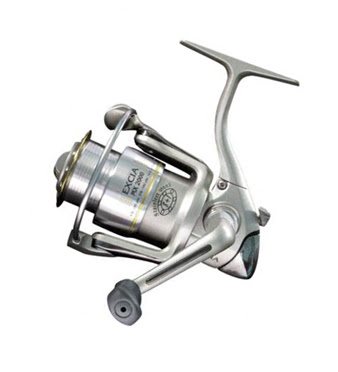
For a rod of this type, a small or medium-sized spinning reel is suitable. As a rule, the requirements for it are somewhat lower than for a spinning reel, but it is also undesirable to install a bad reel; after all, the load on such a fishing rod will be significant. It is desirable that the reel have at least 3 bearings and a durable line roller coated with titanium nitride. The obligatory function of such a reel is a brake and a rear clutch with a beytronker, although you can get by with one front clutch, you just need to have certain skills in using it.
Rod
Sufficiently long rods are used for long casting. Short varieties will not allow you to deliver the bait to the right place.
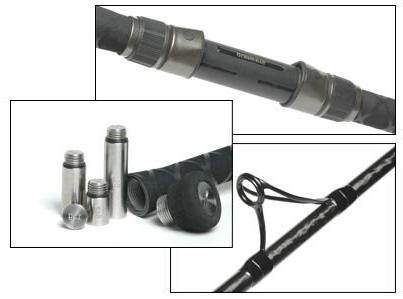
A fishing rod for long casting can have a length of 3.6-4.5 m. It should be light but rigid. The construction of such gear is used quickly. Her knees only bend at the apex. It does not bend in the middle and at the base. This device will also allow you to cast bait very far.
Sports gear of the presented type often has a plug-in design. The telescopic system is practically not used for ultra-long casts.
A long-casting rod of the plug type usually consists of three legs. But for transportation it is better to purchase a product consisting of 4-6 parts. The handle can be cork (for expensive products) or made of porous rubber (cheap varieties).
A telescopic fishing rod is quite suitable for amateur fishing or for frequently changing fishing spots on a pond. Partial assembly of the telescopic form without removing the equipment will significantly save time when using the mobile fishing method.
Reel and line
A very important element for installing a long-casting fishing rod is the reel. It is best to use this circuit element labeled “Match”. They have a lightweight and elongated spool. The drum is convex or small in size. This shape helps to use thin lines.
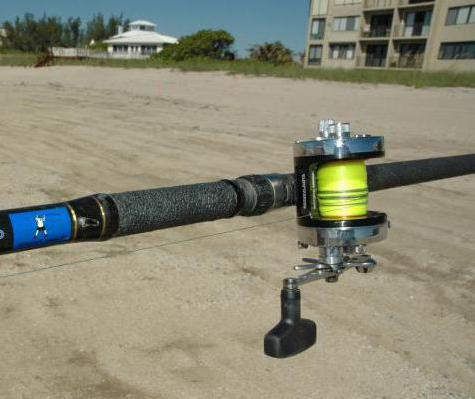
If you nevertheless purchased a regular reel, you will have to put a cork bandage on it or reel it in with a thicker fishing line. Moreover, the second option is less preferable, since the wet line lays very tightly under load. As it dries, it shrinks and deforms against the thicker winding.
For a long-casting fishing reel, an important indicator is the number of bearings. Today, the fishing gear market offers products with a large number of them. There are reels with 10 or more bearings. Their movement is soft, and the product itself is more reliable. However, such elements add weight to the entire structure of the long-casting rod. With a significant number of throws made, this can cause arm fatigue. Therefore, you should not overdo it with the number of bearings. After all, the cost of the coil depends on this.
For such products, a fishing line of 0.12-0.18 mm is used in amateur fishing conditions. For sports purposes, the thread has a smaller thickness of 0.1-0.16 mm.
From 60 to 80 m of fishing line is wound onto the reel. Moreover, when winding, it should not reach the edge of the spool by 0.5-2 mm.
Threads with a density 1.5 times greater than that of water are very popular. It sinks easily without being exposed to wind.
Preparation for installation: necessary equipment elements
Sinker
When using a fixed float, the entire weight of the load is collected in the float and closer to it. When attaching sliding elements of equipment with a load weight of more than 4 g, their location moves as close as possible to the leash.
With this loading method, the fisherman receives several advantages:
- during casting, this type of fastening allows you to easily overcome wind resistance;
- the large weight of the load makes it possible to quite quickly lower the hook with the appropriate bait to the depth or bottom area of the reservoir;
- diving the gear to depth increases the chances of catching a hefty fish trophy.
To properly load the float, you will need sinkers or, as fishermen are accustomed to calling them, “olives” weighing 3.5-8 g. And in order to be prepared for any changes in weather conditions, the right decision would be to make several options for equipment of different weights at once.
When choosing a sinker, it is better to choose a removable type, which has a rod in the center, using the ends of which and two sections of silicone tube to attach the olive to the fishing line. In addition to sinkers, it is worth stocking up on several clamp-type pellets. With their help, the sinker will be attached.
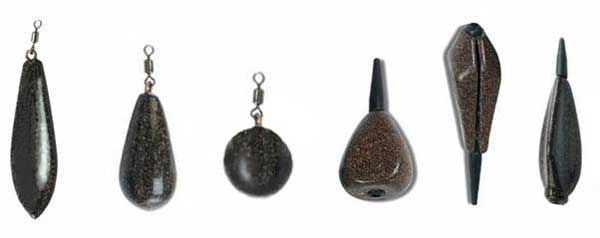
fishing line
The fishing line should be taken with a diameter of 0.12 mm. Of course, you can take a thicker one, but in this case the casting range and accuracy will suffer. Using a sliding type of installation, the load from the main fishing line is evenly distributed over all parts of the tackle.
Recommended reading: The most common knots for fluorocarbon fishing line
You can’t do without a mounting line, although it in no way affects the operation of the gear, but it must have increased strength. Its diameter should be in the range of 0.14-0.18 mm, it directly depends on the weight of the sinker.
You will also need a soft line for the leash. The optimal diameter is 0.1-0.12 mm. An excellent option would be a specialized fishing line that can withstand extreme breaking loads.
It must be remembered that, without the skills, thin fishing lines for installation will cause constant tangling of the gear. At the same time, their use will not last long as they cannot withstand long-term loads with frequent casting. And they often become the main cause of gear breakage.

Shock leader
The shock leader performs a protective function, preventing damage and breakage of the gear. Therefore, the fishing line used to make it must be very strong.
The shock leader takes on the maximum load, both when casting and when retrieving large fish. Its diameter should be between 0.18 and 0.2 mm. When fishing at short distances, there is no need for it and 0.14-0.2 mm of fishing line is wound onto the reel spool.
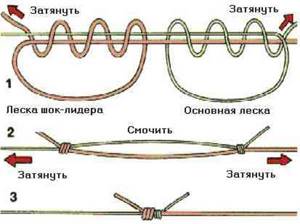
Swivels
An integral element of mounting a float for long-distance casting is swivels of sizes from No. 20 to No. 24. They are attached in two places:
- between the mounting line and the leash;
- at the distance between the mounting line and the shock leader.
The use of small swivels gives the fisherman a number of advantages:
- this element is not confused;
- the swivel helps to avoid tangling the leash and the fishing line attached to it;
- does not significantly affect the loading as a whole.
Sliding elements
Other equally important sliding elements of installation include a snap hook with a Teflon or ceramic ring, which allows sliding along the fishing line.
If you have a standard carabiner with a swivel in your arsenal, then they will also work. But in this case, a damper (bead) is attached in front of the locking knot so that the knot does not slip through the eye of the swivel.
You also need to prepare hooks and elastic bands that will secure them. And it is better to reel the ready-made tackle onto pre-prepared reels.

Float
Equipping a float rod for long-distance casting requires in most cases the presence of a sliding counter. It may have one or two fixation points.
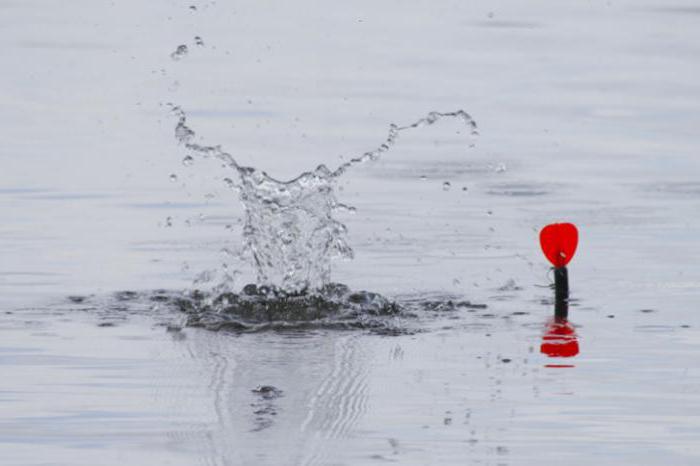
Floats with one attachment point are more often used for sport fishing. They provide a large casting range, which, moreover, has good accuracy. When using such a float, the bite on the rise is more visible.
Fastening at one point allows you to change the carrying capacity of this element without replacing the tackle, for which the float must have an unscrewing keel.
In medium and strong currents, such a float will dive when it involuntarily slows down.
Among amateur fishermen, a float with two attachment points is more often used. It is significantly limited in functionality, but can be used in medium-flow reservoirs.
The length of the float combined with its shape (reminiscent of a cross between an arrow and a ballistic missile) increases its stability and casting capacity.
The feather rigging of the fishing rod for long casting allows it to remain stable. The height of the float will allow you to see the bite on the rise, when the increase in the level of the tackle will be visible from a distance of 60 m. Moreover, the plumage remains under water. The center of gravity of such floats is very low, so the shape of its body is not particularly important.
At the bottom of the rig there is a metal keel, which has a hole for the fishing line. It must be well polished.
The carrying capacity of the float ranges from 0.5 to 5 g. The lighter the float, the more sensitive it is, but a heavier type of tackle will allow you to throw the load further.
Features of the float
Long casting is used to catch almost any fish: roach, carp, crucian carp, bream, carp, sabrefish and even sea garfish. In addition to match fishing rods, you can use spinning rods with bombards and floatless fishing rods - feeders with feeders and donks.
Float tackle for long-distance casting with a match fishing rod should provide a casting distance of 50-70 m without tangling the line. A float for long-distance casting must be clearly visible from a distance and have high aerodynamic characteristics. Spindle-shaped floats with an antenna of 30 cm or higher are best suited. Standard weight is 3-40 grams. In their design they are similar to a torpedo with a long boom in the keel.
Float sliding element
Based on the type of attachment to the fishing line, floats are divided into 3 categories:
- With one passage ring, which is attached to the keel of the float.
- With two passage rings, which are located on the keel and in the upper part of the float.
- With an axial hole along the entire length through which the fishing line is passed.
For match fishing, a float with one through ring is usually used. In order for it to slide freely along the line, it requires sufficient self-loading.
Loading and stoppers
Equipping a float rod for long-distance casting involves using a weight. It is made from several pellets or an olive-like weight. The last 2-4 cm of the float is surrounded by sub-grass.
As for the stopper, it has its own connection system. It consists of certain elements. These include a lower bead stopper, a sliding bead, and a stopper assembly.
When figuring out how to make a float rod for long-distance casting, you should study the stopper installation diagram. Its lower pellet prevents the tackle from getting tangled by limiting the position of the float on the fishing line. It does not slip to the main load thanks to the element presented.
An unscrewing float keel is rarely found in purchased products. However, it will be quite easy to assemble such a float for a long-casting fishing rod yourself.
The sliding bead will prevent the stopper assembly from getting stuck in the keel hole. Its internal diameter is slightly larger than the fishing line, and its external diameter is slightly larger than the hole in the keel.
A locking knot is tied from the thread. It is performed in the same way as fastening the hook forearm. A 2 cm mustache is left, which will allow you to tighten it with the required force. The knot should not twist the line.
There is also a loop for the leash. This element is the same for both blind and sliding float mounting.
How to make long casts with a spinning rod
Not everyone can cast correctly over long distances; sometimes it takes more than a year to perfect the technique. But regular training will not always give the desired result.
To make a long cast with a spinning rod to the required distance, you should adhere to the following general rules:
- hold the form with both hands;
- make some effort;
- make sufficient scope;
- first lower the bait on the fishing line at least to the middle of the rod.
There are several techniques that experienced anglers use. Everyone chooses the one that is most suitable for him.
Hooks
The color and size of hooks for equipping a long-casting fishing rod are presented in different variations. For the presented fishing method, hooks numbered 10-18 are best suited. Their color is selected in accordance with the type of bait. Red varieties are suitable for bloodworms, dark versions are suitable for insects, and white ones are intended for fishing with maggots or bread. If the fish is hungry during a period of turbid water, the color of the hook does not matter much.
A long-casting fishing rod with a float requires the use of a thick wire hook. It is better to take this element 2 numbers more than for regular fishing. This is due to a longer fishing process, when this element of the equipment is subjected to heavy load. To prevent the hook itself or the lips of the fish from breaking, you will need a good strength element of the equipment.
Hooks with a spatula are well suited for the presented method when using fishing line. If you are fishing with a braided thread, you should give preference to a hook with a ring.
The hook must be made of high-quality hardened alloy or non-alloy steel. When pressed, its tip should be elastic and immediately return to its original position.
During fishing, you need to monitor the sharpness of the hook. If roughness appears on it or the sting becomes dull, it is necessary to promptly change the element of the tackle to a new one.
The presented equipment of a fishing rod for long-distance casting will require careful handling during storage. Do not store hooks in a wet state or allow them to come into contact with chemicals. A suitable place for storage is a magnetic box from which they will not fall out without permission.
Diagram of a long-casting fishing rod and its installation
The presented type of gear is sold both in finished, assembled form, and in disassembled form. Having selected the elements in accordance with the above recommendations, you can mount them together with your own hands, as well as perform the equipment properly.
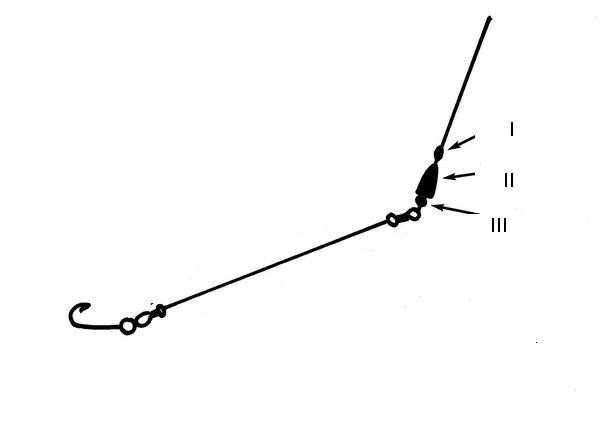
I – stopper;
II - load;
III – bead.
The design of a fishing rod for long-distance casting requires the presence of such mandatory elements as a rod, reel, main line, float, weight, stopper, and a leash with hooks.
The rod must have a sufficient number of guides for the fishing line. This will help distribute the load evenly along the entire length of the form. If there are not enough of them supplied with the rod, you should purchase them separately. It is better if the number of rings is from 10 to 16, depending on the length of the rod.
When wondering how to assemble a fishing rod for long casting, you should pay attention to the reel seat. It is better to purchase its sliding variety. During the installation process, you can always adjust the position of the coil for comfort.
The next stage of installation is assembling the equipment. Luck in the fishing process largely depends on the correctness of the latter.
One of the most important elements of equipment for this fishing method is sinkers. In a blind rig this element is located close to the float, and in a sliding rig it is located near the leash.
As a sinker, pellets of various shapes are used, the weight of which is selected in accordance with the type of float. The diameter of the fishing line must be correlated with the weight of the sinker.
Moreover, installing a fishing rod for long-distance casting involves using a series of sinkers of different weights. The heavier olive-like varieties are set above the smaller pellets. “Olive” will allow the rig to sink to the bottom faster. Small pellets simply align the leash with the hooks.
To attach the leash to the main line, it is better to use special carabiners. To prevent the line from getting tangled during casting, special protective clips are used that secure the hook with bait.
Such installation of equipment requires adherence to a certain technology. A cross-lock fastener is attached to a fishing line about 75 cm long at one end. A little above it, a protective clip is added to the fishing line. Then a bead, a crimp sleeve (without crimping it) and another bead are put on the thread. The line is then passed through the eye of the swivel and the end bead.
Another swivel is tied to the second end of the fishing line. A leash up to 60 cm long with a hook is tied to the other eye of the first swivel.
Match. We complete the tackle for long casting
First , let’s define that long-distance casting means a casting of equipment in which the length of the cast line is several times greater than the length of the rod. This type of tackle is called English or, more often, match tackle. The tackle can be equipped with various accessories, each interesting in its own way. And the installation of match gear for long-distance casting with a special float is, in terms of popularity, far from in last place. This is due to the wide possibilities of its application. And, above all, it is an opportunity to catch fish that are located at a long distance from the shore.
Not so long ago, match tackle was used exclusively in sport fishing, as it required not only special equipment and rods, but also specific skills for casting it. Of course, such skills are acquired only with experience and take some time to master. But such experience will be rewarded, because most often the big fish is located at a great distance from the shore and at great depths. Here is the match tackle and allows you to get to it. Currently, match tackle for long-distance casting is becoming more and more common among ordinary amateur fishermen. Let's take a closer look at what this undoubtedly very interesting, and, most importantly, effective tackle consists of.
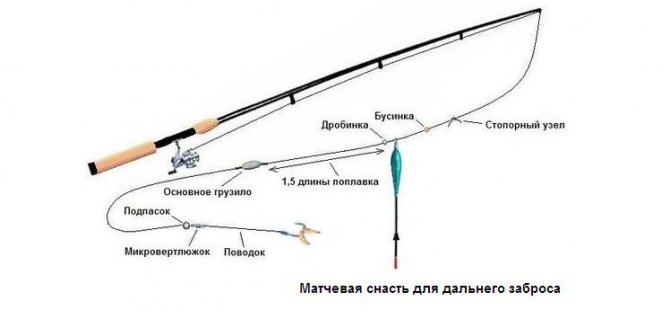
1. RODS
The headstock, as mentioned above, for this tackle is called match and is used in a relatively short length - from 3.6 to 4.2 meters. Longer rods, which are available up to 4.8 meters, are not very convenient to use, and shorter ones do not allow you to perform the required cast. As for spinning fishing, match rods are equipped with guide rings and an inertia-free reel. According to their structure and class, such rods are divided into 3 categories depending on the weight of the baits , which can be cast without the risk of breaking the rod:
- Easy class . Test - from 5 to 20 grams. Classic fishing rod 3.9 - 4.2 meters long. Build from soft to fast.
- Middle class . Test - from 10 to 40 grams. Carp rod 3.9 - 4.2 meters long. Weight is 20% more than the light class. Increased number of rings to distribute the load on the rod. Build from soft to fast.
- Hard class . Test - from 20 to 65 grams. Rods are 4.5 - 4.8 meters long. Build quickly. Fishing at distances of more than 50 meters.
In sport fishing, rods with a soft or, as they are also called, parabolic structure are most often used, which, when fishing for large fish, bends so that it practically becomes a continuation of the fishing line and the entire load is distributed over the rod.

A rod with a casting weight of 5 to 20 grams among , i.e. classic match rod. But the system chosen by amateur fishermen is closer to the fast one . With such a rod it is easier to master the tackle and easier to handle. 12 - 16 high-quality rings are installed on it - this is necessary to evenly distribute the load across the rod. The rings on the rod are installed on a high leg. This allows not only long casting, but also prevents the line from sticking to the rod in wet weather, reducing resistance when casting. Such fishing rods most often have a plug design consisting of 3 legs, less often - of 4. The handle of such rods is elongated so that you can cast while holding the rod with both hands. The handle of expensive fishing rods is made of cork, while the handle of inexpensive ones is made of porous rubber.
2. REEL
The reel uses an inertia-free reel with an open spool, which holds about 130 - 150 meters of fishing line with a diameter of 0.15 mm. Specialized reels for long-distance casting are marked “Match”. It is desirable that the reel have a high gear ratio, for example, 5.5:1 or more. This will allow you to select line in fewer reel revolutions. The length of the fishing line for one full turn can be up to 90 cm. The recommended size is 3000 - 4000 units according to the classification, this is the most universal reel size for match rods. It is advisable that the reel have a replaceable spool; this will allow you to quickly replace the fishing line if necessary, for example, if it breaks. The weight of the reel should not exceed 300 grams. Number of bearings - at least 5 pcs. But the choice of front or rear clutch depends only on the preferences of the fisherman.
3. LINE
- Main line . Monofilament line with a diameter of 0.14-0.18 mm is used as the main fishing line. The fishing line is chosen to be of high quality. The main characteristics of the fishing line for this tackle are that it should sink quickly and have minimal stretch. The length of the fishing line depends on the capacity of the reel spool, the main thing is that the wound fishing line should not reach the edge of the spool by 1-2 mm . If there is more fishing line, there will be “beards”, if less, the casting range will decrease.
- Lead line. The main characteristic of a leader line or leash is that its breaking load should be less than the breaking load of the main line. In case of a snag, we only lose the leash, and not the entire equipment. And of course it must also be made from high quality fishing line. The length of the leash is about 50-70 cm, the diameter is slightly less than the main line, if the lines are from the same manufacturer and are in the same production line.
4. FLOATS
floats are used for long-distance fishing, which are called “ Wagler ” (waggler). They are long, smooth, and have one attachment point. They are produced both with and without their own loading. Floats with their own weight, as a rule, have additional weights, which regulate the most optimal weight. By removing the load, you increase the buoyancy of the float, and, consequently, its height above the water surface increases. This is useful in big waves. In calm weather, increase the amount of weight, thereby increasing the sensitivity of the float. Most often, such floats are equipped with replaceable tips, which are painted in bright colors. This is necessary to better see the float at different times of the day. Additionally, such floats are equipped with ailerons, which increase the accuracy of the float's flight. The weight of the floats is from 5 to 20 grams or more. The float is attached to the main line using swivels and a clasp. This is a simple and affordable way to replace a float.
Floats can be installed on gear in two ways:
- Hard. This method of fixation is used when the depth of the reservoir to which the bait is cast is less than the length of the rod. For example, the depth of the reservoir is 3.5 meters, and the length of the rod is 3.9 meters.
- "Sliding" method . Used when the depth of the reservoir exceeds the length of the rod. In this case, a special clamp is installed on the fishing line - a locking knot, which limits the movement of the float, it is also called a stopper. Already from the name itself it follows that it limits the movement of the float along the fishing line depending on the depth. You can buy ready-made stoppers, or make your own. Most often, thread stoppers are used; they do not limit the passage of fishing line through the rings. There are also rubber stoppers, but they are limited in their use.
5. HOOKS
to give any specific recommendations for hooks when fishing with match gear; it all depends on the expected catch and the bait used. The only thing I would like to recommend is that the hooks be made of thin wire ; you can easily attach any bait, both plant and animal, to them. Popular hook sizes are from #18 to #10.
6. LOADING GEAR
The simplest option for loading gear at great depths is to install one drop-shaped weight. A more distributed loading is also possible, when the sliding of the float is limited by a locking weight, then at a distance greater than the length of the float by 5-15 cm (or 1.5 times the length of the float), another 1-2 pellet weights are attached, and one or more lead pellets are attached below smaller (the outermost pellet is called a sub-grass). Next, the leash is attached to the swivel or using a loop connection. The length of the leash can be completely different, for example, for catching crucian carp, floats 30 cm long are most often used, and for catching carp - 60 cm.
This garland of lead pellets allows you to avoid a strong splash of water when casting and not scare the fish. And such a load will descend smoothly in the water column, as if planning. The distance between the pellets is 20-25 cm, from the outer pellet to the supporting pellet - 10-20 cm. Most suitable for careful biting. But with active fishing, there is always room for experimentation. a small bead above the float , which will serve as an additional slip limiter for the float.

7. STOP KNOT
The ax knot, the most important element of equipment for long-distance fishing, largely determines the performance of the entire tackle. There can be from 1 to 3 locking knots on the tackle. Of course, the main stop knot is tied above the float and limits the depth of its immersion. The second knot can be tied below the float, and limits its movement before loading, reducing tangling of the tackle. But the third knot, again, can be tied on the fishing line as a mark for the casting distance of the tackle. This is convenient for throwing the tackle precisely, for example, into a baited area. The knots should pass freely through the passage rings without moving along the fishing line. The locking knots are tightened carefully, constantly testing its movement. Most often they are knitted from bright nylon thread with cotton with a diameter of 0.8-1.0 mm.

8. CAST
It is not an easy task to make a long and accurate cast, especially at the initial stage of mastering match gear. The main thing is to understand how the tackle behaves when casting. Casting, the float drags the equipment with the load behind it, and only at the planning stage does the load move forward and all the equipment lies in a straight line. The float must fly along a certain trajectory, not low, but not high either. Very often, when casting, individual elements of the tackle become entangled when it falls into the water. Avoiding this is not so difficult. At the moment when the baited hook falls into the water, lightly reel in the fishing line, making 2-3 turns with the reel. Then we lower the rod tip into the water and make a few turns to submerge the line. If there is a side wind blowing, then it is necessary to lower the line; if it is blowing from the back, then it is not necessary. It will take a little experience to cast the tackle far and accurately. But, having mastered this tackle, any fisherman will significantly expand his fishing capabilities, especially in large bodies of water.
Happy fishing!
Casting technique
A properly assembled fishing rod will require proper handling. The casting technique should be mastered to get a good catch using the method discussed.
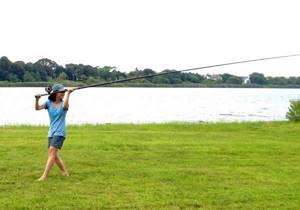
Anyone who has used a spinning rod can use the same technology in this case. The design of a fishing rod for long-distance casting will allow you to deliver cargo over considerable distances.
With the correct ratio, the mass of the float should be 75% of the total value, and 25% is the weight of the sinkers. This will prevent the tackle from overlapping during the throw.
The float should be 1-1.5 m from the top of the fishing rod before casting. It should be done after assessing the area around you. Nothing should prevent the tackle from flying forward.
Before the weight with the hook falls into the water, the fishing line should be slowed down by holding it with your finger. The entire equipment will be extended forward.
When the float touches the water, you should close the shackle on the line-layer spool and press the line with the tip of the rod. Then the bow on the spool is opened again, releasing the thread. When the float hits the water, it will rest against the stopper.
When the cast is completed, the rod is placed on a stand so that its top is as close to the water as possible. The line should be taut. This will ensure good bite sensitivity.
The technique itself should be honed by casting and following simple rules. At the same time, it is not at all necessary to use the most expensive pieces of equipment. The main thing is that they are installed correctly. And technical casts with good range and accuracy will become better when you gain some experience.
